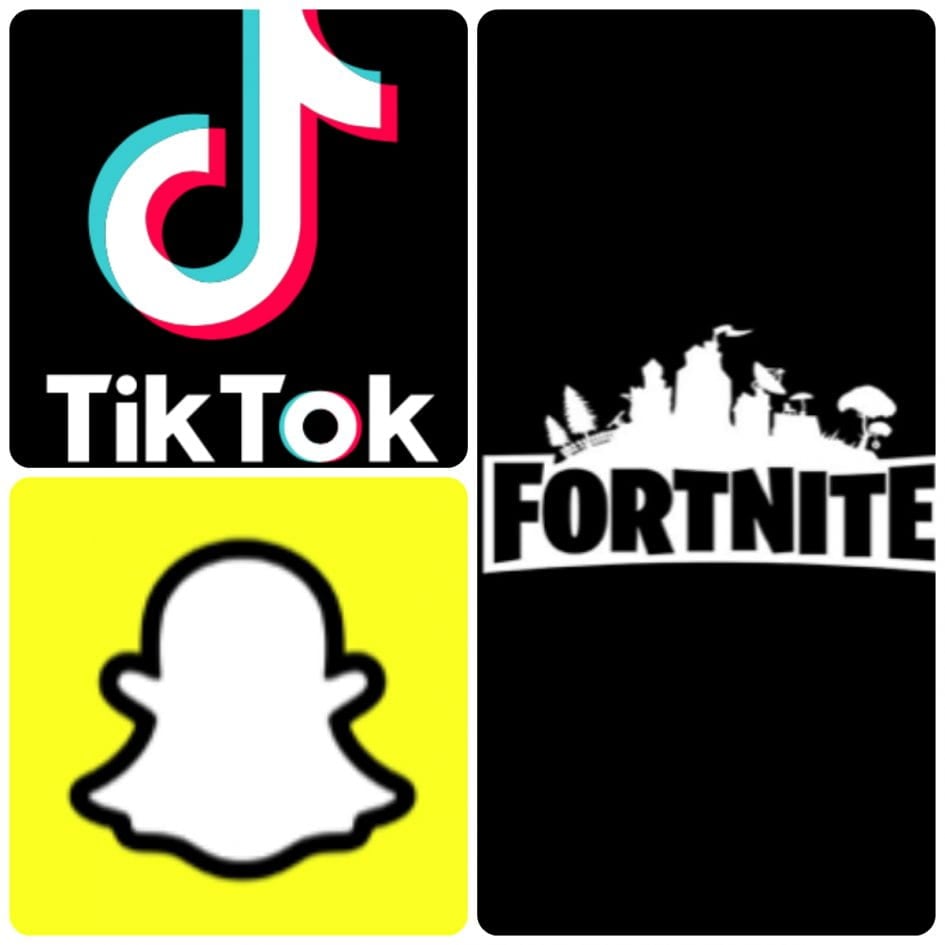As some students are spending more time at home and online at the moment, there have been a number of parent conversations about student use of apps including Snapchat, Fortnite and TikToc. The school’s view is that these apps are not suitable for primary school-aged children.
You may find it helpful to read the following summaries of these apps to learn more about what they involve. Ultimately, the decision about what your child engages with online rests with you as parents. You will know that sometimes a student’s online activity has an impact on what happens at school and in their peer group. Your help monitoring your child’s online activity is appreciated by us all.
If you would like to discuss any of these topics further, please get in touch with our IT coordinator, Dale O’Connor.
Snapchat
Many of the features of Snapchat, while appealing, are more suitable for adults. Teenagers tend to flock to Snapchat to keep up with friends, create content, and see what’s new with the celebrities and brands they follow. There are a lot of fun and positive aspects of the app, but there are also dangers associated with its use. Social media platforms like Snapchat can expose children to inappropriate content, and although users must be 13 to create an account, much of the content available in the ‘Discover’ section is aimed at a much higher age demographic.
One of the biggest draws of Snapchat is that messages disappear after a certain amount of time — individual Snaps disappear immediately after viewing and Stories disappear after 24 hours. This can give users a feeling of freedom and make it difficult for parents to monitor how their child is using the app. The idea that the posts they create aren’t permanent, or that they can get away with posting hurtful or sexual content without consequence, is a feature that is commonly abused. Unfortunately a quick screenshot or recording means that just like anywhere else on the internet, what you post can come back to haunt you. Snapchat has a host of features that not only can expose children to objectionable content but also possibly jeopardise their privacy and safety.
Snapchat has a feature called ‘Snap Map’ that allows users to see where their friends are located while they are using the app. This function can be switched off, but if users post to the ‘Our Story’ section this setting is overridden and their snapchat is posted to the map. Click here to find out more about Snapchat from the Carly Ryan Foundation.
TikTok
TikTok is a video-sharing platform that allows users to create, share, and react to short videos that play over a soundtrack. Each video lasts up to 15 seconds, and users can add a variety of filters and effects to enhance them. They also have the ability to send videos privately among friends or with the general public. Anyone can see public videos, even if they don’t have an account. Users need to be 13 years old to create an account.
The app compiles the most popular videos into a feed serving as a highlight reel for the entire global platform. Users can contact anyone in the world due to the public nature of the platform. Although you can block or report others for inappropriate messages, TikTok has no broader parental controls. Even if you set your own account to private, you may still be exposed to sexual or violent content posted to the public feed.
Cyberbullying is a major issue on TikTok as people can create multiple accounts, using aliases to target others they don’t like. The ‘Reactions’ feature, which allows users to respond to videos with videos of their own, is often used for negative responses. At its core, TikTok encourages expression through music, but sometimes people express things that are highly personal or sensitive. Click here to find out more about TikTok from the Carly Ryan Foundation.
Fortnite
There are a number of different versions of the game Fortnite, but one of the most popular is Fortnite: Battle Royale, which is a highly popular online strategy game developed by Epic Games. It is a multiplayer shooter game that The Australia Classification Board’s gives an ‘M’ rating, meaning it’s recommended for players ages 15 and up.
Fortnite is a combat-based game in which up to 100 players are dropped onto the game map and must compete to be the last one standing by killing every other player in the game. It is known to be highly addictive for players, featuring games that must be completed within 20 minutes, and it is not possible to “pause” or resume a game once it has started. It is an exciting, well produced game with high production values.
Promoters of Fortnite point to the fact that it involves problem solving, team work and strategic thinking. Critics point out that those skills can be learnt in other, far healthier ways.
Promoters point out that the violence is bloodless and not graphic; critics find this aspect even more concerning as it sanitises or normalises killing.
Fortnite depicts gun violence, and realistic weapons. Its addictive nature can mean that children lose focus on other real-world activities and relationships.
There are a number of online safety concerns related related to Fortnite. Online chat texting built into the game cannot be reliably blocked or filtered. Young players may be exposed to unsuitable language or conversations, and be contactable by other players who may be using concealed or assumed identities. Click here to find out more about Fortnite from the Carly Ryan Foundation.
